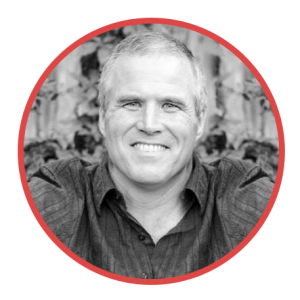Yay! You’re Not Dead!
Those were the ever so sweet words Steve Lawton heard on March 9, 2015 as his family celebrated his “Alive Day.” The day exactly a year following his near fatal skiing accident.

When Lawton arrived at the hospital the day of his accident after coming out of his skis and plowing straight into a tree at 45mph, he had a Glascow Coma Score of three, the lowest possible score. To give you an idea, 87 percent of patients arriving at the hospital with a GCS of three either do not survive or remain in a vegetative state permanently.
In addition to the head trauma, he had collapsed lungs, eleven total broken bones including 6 broken vertebrae and a myriad of other injuries. The doctors told his wife on the day of the accident that they weren’t sure if he would survive. “He’s as sick as he can be and still be alive, and he is going to get worse before he gets better,” they said.
 So the fact that one year from that fateful day, Lawton is eating cake and celebrating life with family is nothing short of a miracle. As he puts it, “To simply survive was remarkable—to recover was miraculous.”
So the fact that one year from that fateful day, Lawton is eating cake and celebrating life with family is nothing short of a miracle. As he puts it, “To simply survive was remarkable—to recover was miraculous.”
So how did Lawton beat the odds? In addition to the great care from doctors and the support from his family, friends and co-workers at Dell, he claims that his attitude literally saved his life. His amazing story is an example of how important our attitude is in everything we do. Lawton has always been a glass half full kind of guy. That didn’t change even after his world was turned upside down by a very unforgiving tree. He maintained a positive outlook throughout his recovery. Even though he knew it would involve a lot of misery and hard work, failure simply wasn’t an option. His undying optimism that led to his recovery is what psychologists called a positivity offset. In Lawton’s case, he had been unknowingly building up his positivity offset throughout his life through a process in the brain called Neuroplasticity.
Neuroplasticity is a process where you can reorganize your brain’s neural connections – literally changing the structure and function of your brain, based solely on thoughts. Ever notice that when you do the same thing over and over, it gets easier? That’s neuroplasticity at work. This process also works for our attitude. When we choose our thoughts to be positive, when we choose our glasses to be half full; we control and actively participate in the wiring of our brains to be more positive. Just like the old adage says, “You are what you think.”
Attitude reflects leadership
The added benefit to the positivity offset is it can have a direct effect on the people we live with and work with day in and day out. It’s no mistake that when you enter “Positive Leadership” into Amazon, over 1,600 book titles appear. Effective leaders, like Lawton, continually practice positivity in the workplace. They recognize that attitudes are contagious and the attitude of the company starts with them. By promoting a positive work environment, leaders benefit from a more productive and collaborative workforce.
Lawton continues to share his inspirational story and the lessons he learned in his recovery in his talks with organizations across Dell. Because of the great feedback he’s received, he turned it into a book: Head First: A Crash Course in Positivity. In it he tells the story of his recovery and gives eight practical ways to increase positivity in your personal and professional life. Here are a couple of those principles.
My story isn’t about my accident at all. It is about my recovery and overcoming obstacles. It is about attitude and positivity, which provides the foundation of leadership.
Focus on what you can control
Lawton learned early in his recovery to let go of the things he could not control. He had no control over his doctors, he learned to trust their abilities fully. He had no control over what was happening back at work, he trusted his team to pick up his responsibilities and that when he was ready, his job would be waiting for him.
As Lawton remembers, “I was worried Dell was going to forget all about me, give my job away. My manager assured me that there would be plenty of work for me to return to and that I should just focus on getting better.”
With that assurance, Lawton was able to focus on what he could control – his recovery and doing it with a relentlessly positive attitude. Once he was able to narrow his focus to what he did have control over, his progress was exponential.
Often times leaders are overwhelmed by internal and external factors affecting their teams and businesses. When you feel overwhelmed, break down the situation into three categories:
- What you control,
- What you can influence, and
- What is out of your control.
If we can’t control it or change it, then why worry about it? That just diverts our energy away from progress. Start by narrowing your focus on the issues you can control and fix, and make an immediate impact.
Learn to laugh in the midst of pain
Five days after Lawton’s accident, in the midst of some pretty grim times in his recovery process, he received a package from a friend. Included was Henrietta, a three foot tall rubber chicken wearing a purple polka-dot bikini and too much rouge. Henrietta quickly became a source of smiles and laughter, lessening the fear and angst of Lawton’s visitors as it was near impossible not to be distracted by the giant rubber chicken in the room.
Using humor as a detractor from pain dates back to surgeons of the 13th century. Studies have proven that laughter really is the best medicine as it can relax muscles throughout the body, balance blood pressure, improve mental functions (i.e., alertness, memory, creativity), reduce stress, and strengthen social bonds as well as a host of other beneficial results.
Understanding the power laughter can have on the healing process and the mindset, Lawton to this day uses laughter in his meetings at Dell:
“I have found there is a marked difference in the productivity of meetings that start on a positive note. We still talk about the problems we face, but the tone of the conversation is much more productive, and there is increased collaboration focused on solving the problems.”
Know when and where to push yourself and others
Four months after Lawton’s accident he returned to Dell part-time with a newfound appreciation for positivity.
“I was literally giddy to go back to work, I can guarantee I was the happiest person at Dell that day. It was such a milestone for me in my recovery,” he shares.
However, Lawton couldn’t help but be a little anxious. Was he going to be able to keep up? Was he as sharp as he used to be? He didn’t want to ruin his professional brand that he had spent years establishing.
As Lawton remembers, “My leaders were patient with me as I eased back into work. They respected my limitations and let me manage my hours and workload. I will always be grateful to have been working for Dell when the accident happened. I know that the environment and leaders at Dell made my transition to work not only possible, but also the best it could be.”
Had Lawton’s leadership team set unrealistic expectations on his recovery and return to work, he might not have made the full recovery he did. He was given the full support and the control to manage his workload and hours, setting him on a course for a successful transition back.
By supporting and encouraging, we get much more production out of our teams. If pushed too hard, people have the tendency to push back or flee. The key is to find that perfect balance between driving our teams to their full capabilities and providing autonomy for them manage their own progress.
Learn from your struggles
Sometimes things don’t go right. In those low times, it is more important than ever to step back and evaluate the situation. Don’t get consumed by “Why me?” Recognize those obstacles for what they are and formulate a strategy to overcome. By keeping a positive attitude, you are less likely to fall into self-pity mode.
Lawton relates this mindset to a bobber. The goal is to keep your bobber floating on the surface. If your bobber is pulled under, recognize that challenge as a learning and growing opportunity for yourself. Acknowledge it, learn from it, and then use your practice in positivity to lift your bobber and your attitude back to the surface. As Lawton puts it, “through neuroplasticity, you can increase the buoyancy force of your bobber…you can increase your bobber’s potential so that when you inevitably experience a challenge, you can overcome it.”
If leaders allow themselves to be pulled under by unfortunate circumstances, they will pull their team down with them. The chain reaction can be a kiss of death for any forward progress. As Steve has proven, your attitude directly affects your outcomes and directly affects those around you. So why not take the high road, lead with positivity, keep your bobber and those bobbers around you afloat.
Mahatma Gandhi eloquently stated:
Your thoughts become your words,
Your words become your actions,
Your actions become your habits,
Your habits become your values,
Your values become your destiny.
To learn more about Steve Lawton or request a speaking engagement, visit www.stevehlawton.com